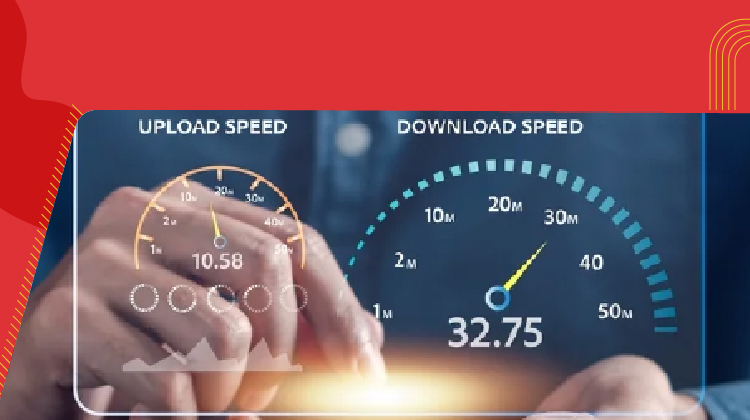How is fiber optic broadband different from traditional broadband connections?
Wednesday, Sep 15, 2021 · 3 minutes


HOW IS FIBER OPTIC BROADBAND DIFFERENT FROM TRADITIONAL BROADBAND CONNECTIONS?
Wednesday, Sep 15, 2021 · 3 minutes
With 2.5 quintillion bytes of data being created and exchanged around the globe every day on the Web, speed is a critical factor for data transfers. The traditional broadband connection (ADSL) uses copper phone lines to transact. In contrast, the latest technology uses fiber optic cables that traverse longer distances, are more secure and reliable than copper, cheaper in the longer time frame, and are easier to scale than copper. Let us find out the advantages of using fiber broadband over its predecessor.
Fiber broadband uses high-speed fiber optic cables to deliver colossal data sets across larger distances. Consequently, collaboration becomes faster and easier. It offers speed up to 40 Gbps with balanced upload and download bandwidth, improving productivity, collaboration, customer communication, and browsing drastically compared to ADSL technology.
If you seek to enjoy higher bandwidth for business or personal use, investing in fiber broadband is a wise decision. Why? Traditional broadband connections used copper wire infrastructure for transmitting data. Originally, this infrastructure was exclusively used for voice calls transmission and didn’t require higher bandwidth.
However, with the development of Internet technology, the need to transmit data at higher speeds over larger distances emerged, which could only be resolved with fiber optic cables. The fiber was designed for long-range networks. It was used for connecting cell phone towers installed in remote locations to the network of the cell phone company. Certain fiber types could transmit up to 25 miles.
Fiber broadband offers consistent performance as it offers a dedicated line to the user. A dedicated connection prevents delays in data processing and latency. However, ADSL broadband connection uses a shared cable wire between users and is prone to higher downtime and slow data transfer.
Further, old copper cables get worn out and can easily catch fire, causing great damage to property and people. However, fiber broadband is constructed from fire-proof materials and hence safe.
##BlogVASBanner##
Fiber broadband offers a higher upload/download speed that enables users to enjoy uninterrupted video/audio conferencing, streaming, and browsing, regardless of the number of devices plugged into the connection. However, since copper cables infrastructure was designed to transmit short-range voice calls; hence data transmission gets restricted over larger distances, and you may experience a lag in voice calls (VoIP) or browsing.
Cybersecurity is significantly important in today’s era when financial, personal, business, and other transactions are done on the Internet. Privacy and data protection laws govern cybersecurity, and a breach costs billions in losses.
Copper cable infrastructure can be easily intercepted by connecting taps to a cable to receive the electronic signals. However, breaching fiber optic is difficult, as the compromised cable emits light from transmissions which is quickly identifiable, and the breach can be intervened. With an increase in distributed-denial-of-service (DDoS) attacks, fiber broadband offers greater security in their network.
The Internet speed is directly correlated with the right of the material used. The ADSL broadband connection uses copper cable for data transmission, and copper is heavier than fiber, reducing the internet speed. Further, copper wires consume larger storage space, while micro-thin fiber optics can be stored in just half the space of copper.
The upfront cost of installing fiber broadband is expensive as compared to ADSL. However, the total cost of ownership (TCO) over a longer time frame is lower because it’s more durable, requires less hardware, and is cheaper to maintain.
Our best Broadband Plans offer seamless fiber optic connection for users. So, if you seek a high-data transfer speed and reliable broadband connection that would meet your professional and personal goals, talk to our experts today.
86

The New Social: How High-Speed Internet is Redefining 'Quality Time' with Friends and Family
Read more306

How ACT SmartWi-Fi is Redefining Home Internet in 2025: The Age of AI-Powered Seamless Connectivity
Read more127

From Bandwidth to Intelligence: How AI Is Redefining Business Demands from ISPs
Read more
A referral link has been sent to your friend.
Once your friend completes their installation, you'll receive a notification about a 25% discount on your next bill
![]() Please wait while we redirect you
Please wait while we redirect you

![]() One of our representatives will reach out to you shortly
One of our representatives will reach out to you shortly

One of our representatives will reach out to your shortly
![]() Please wait while we redirect you
Please wait while we redirect you

Please enter your registered phone number to proceed

Please enter correct OTP to proceed


Dear customer you are successfully subscribed
Please wait while we redirect you

Your ACT Shield subscription has been successfully deactivated

Dear user, Your account doesn't have an active subscription

Dear customer Entertainment pack is already activated.
Please wait while we redirect you